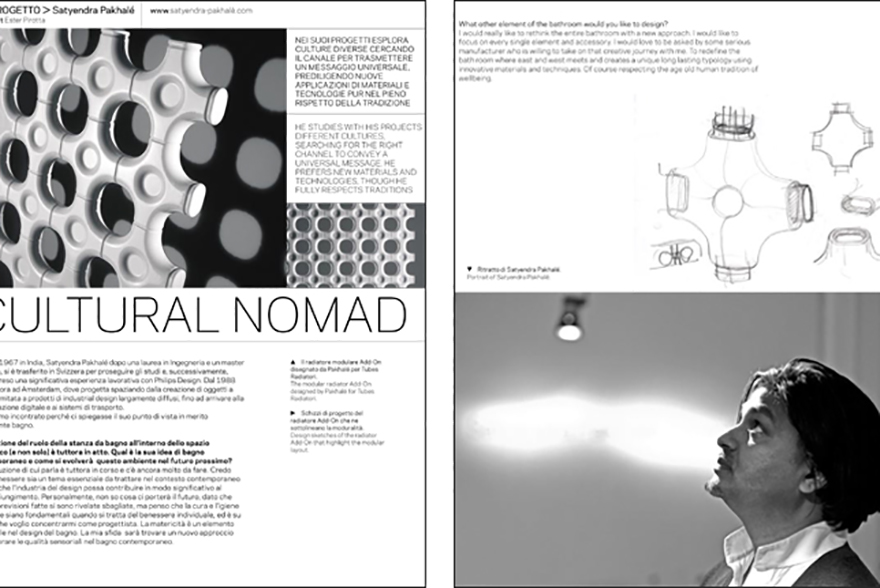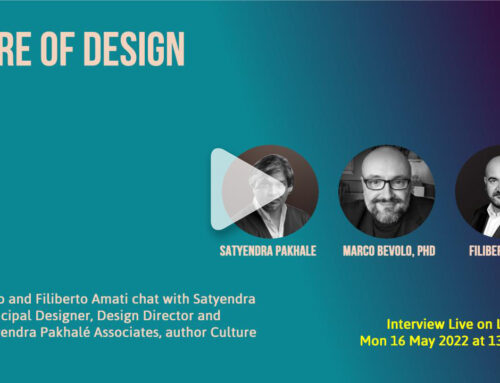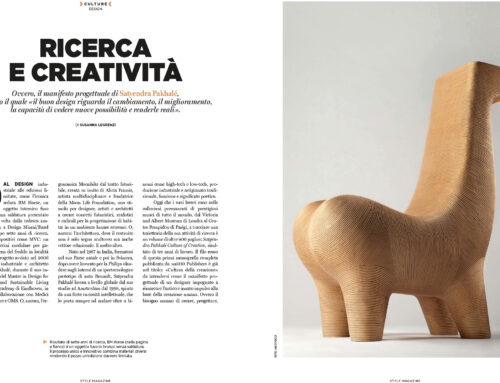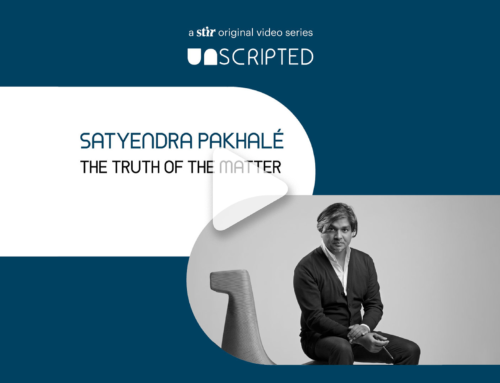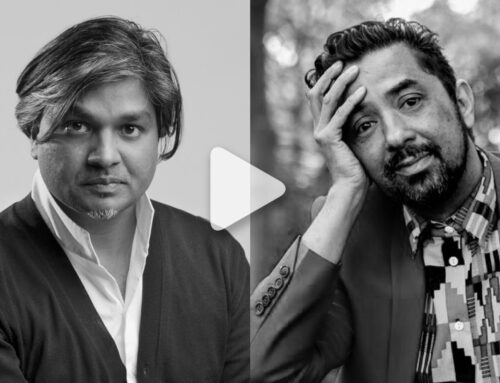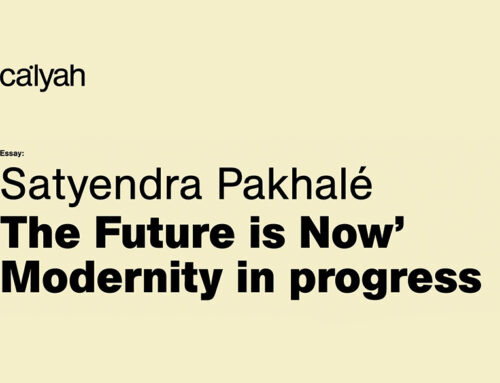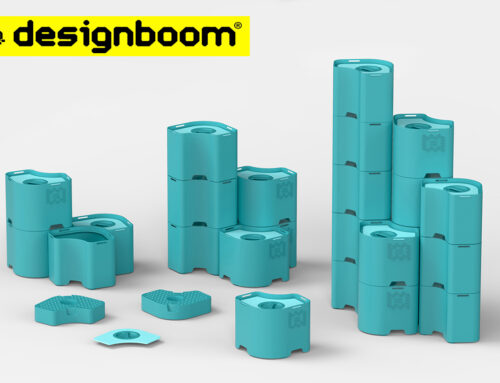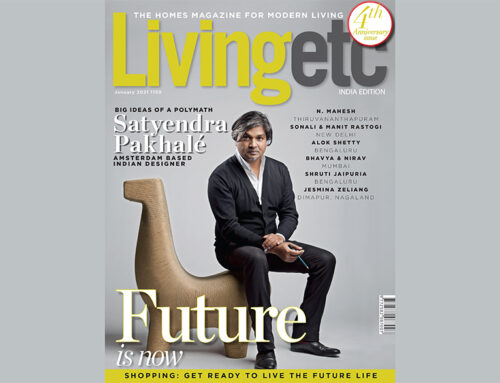ENG:
HE STUDIES WITH HIS PROJECTS DIFFERENT CULTURES, SEARCHING FOR THE RIGHT CHANNEL TO CONVEY A UNIVERSAL MESSAGE. HE PREFERS NEW MATERIALS AND TECHNOLOGIES, THOUGH HE FULLY RESPECTS TRADITIONS
Satyendra Pakhalé was born in India in 1967. After completing his Bachelor of Engineering, Master of Design in India and Advanced Product Design in Switzerland, he worked at Philips Design. In 1998 he set up his own design practice in Amsterdam. Since then he has been working on various kinds of projects, ranging from limited-edition products to really widespread industrial design ones. He also create new products in the areas of digital communication and transportation. We met him to have him explain his point of view of the bathroom.
The bathroom has become ever more important in the home and elsewhere. This evolution is still in progress…what is your idea of a contemporary bathroom and how do you think it will evolve in the near future?
Yes, I agree. The evolution of the bathroom is happening and there is still a lot to be done. I feel, well-being is very important and essential issue to deal with in contemporary context. I think there are lot of new possibilities that proper industrial design can contribute to wellbeing. I personally do not know what the future will bring, as every predication about future has been wrong. But what I think it is crucial is the personal care and personal hygiene, when it comes to well-being of a person. . I would like to focus on those issues while designing bathroom. Materiality is very important in bathroom design, how to create warmth and explore sensorial qualities in bathroom in a fresh way would be my challenge.
More and more often, the bathroom is connected to the bedroom. This is true not only in homes but also in hotel rooms, for example. What is your opinion about this solution? Do you see the bathroom as an intimate and private space or as an ‘open’ space?
Certainly bathroom is an intimate and private space- but having said that it is indeed a culture specific scenario. For example in eastern cultures bathroom could as well be an ‘open’ space. I do not see one is better than other, I think both options are good and could be used in an appropriate context. I personally do not believe in a one fit all situation kind of design approach. I think we must always try and seek diversity within industrial context. I know it sounds like a contradiction but that is the challenge I seek in every design project.
What role does the bathroom in the homes have in your home country, India?
Bathroom is an intimate super private space. There is a long tradition of hamam – steam bath in India and personal space in that scenario is special. But it is also a kind of selective social space, meaning a family members could share it or use it bit more open way than more individualistic approach seen in Europe. That has to do with culture habits and people taking care of each other. That is a big common denominator in the entire Easter cultures and India is not an exception.
One of your most famous projects is the Add-On radiator for Tubes which is perfect for the contemporary bathroom. This was a truly original interpretation of a technical element which is played on its modularity. How did this project begin?
I was invited to rethink a traditional radiator. They were really open for new ideas and technological innovations. I am always interested in industrial design but with real innovation and one that really goes to the core of the issues like utility, technology and above all the overall design iconography. the first thought that came to my mind is to create a radiator that has an effectively larger surface area. I wanted to create a radiator which also has a personality of an object and presence in interior architecture setting with its own modest dignity. In this project I could really apply my mechanical engineering background together with my industrial design mindset to design products within industrial context yet pushing the boundaries of what is possible. Tubes was willing to take a risk and go ahead with it. I am glad that I could run this product creation process singularly from the first sketch idea, all the way from product development to industrial production, that was very satisfying.
What other element of the bathroom would you like to design?
I would really like to rethink the entire bathroom with a new approach. I would like to focus on every single element and accessory. I would love to be asked by some serious manufacturer who is willing to take on that creative journey with me. To redefine the bath room where east and west meets and creates a unique long lasting typology using innovative materials and techniques. Of course respecting the age old human tradition of wellbeing.
ITA:
NEI SUOI PROGETTI ESPLORA CULTURE DIVERSE CERCANDO IL CANALE PER TRASMETTERE UN MESSAGGIO UNIVERSALE, PREDILIGENDO NUOVE APPLICAZIONI DI MATERIALI E TECNOLOGIE PUR NEL PIENO RISPETTO DELLA TRADIZIONE
L ‘evoluzione del ruolo della stanza da bagno all‘interno dello spazio domestico (e non solo) è tuttora in atto. Qual è la sua idea di bagno contemporaneo e come si evolverà questo ambiente nel futuro prossimo?
Sì, l‘evoluzione di cui parla è tuttora in corso e c’è ancora molto da fare. Credo che il benessere sia un tema essenziale da trattare nel contesto contemporaneo e penso che l’industria del design possa contribuire in modo significativo al suo raggiungimento. Personalmente, non so cosa ci porterà il futuro, dato che tutte le previsioni fatte si sono rivelate sbagliate, ma penso che la cura e l’igiene personale siano fondamentali quando si tratta del benessere individuale, ed è su questo che voglio concentrarmi come progettista. La matericità è un elemento essenziale nel design del bagno. La mia sfida sarà trovare un nuovo approccio per esplorare le qualità sensoriali nel bagno contemporaneo.
Sempre più spesso il bagno si apre verso la camera da letto, non solo nelle abitazioni ma, ad esempio, nelle stanze d’albergo. Come vive questo ambiente? Stanza da bagno come luogo intimo e privato oppure come spazio aperto? Certamente il bagno è uno spazio intimo e privato, ma è anche uno scenario di cultura particolare. Nei Paesi orientali, ad esempio, la stanza da bagno potrebbe anche essere uno spazio “aperto”. Un’opzione non è meglio dell’altra, entrambe sono valide nel contesto appropriato. Personalmente, non credo in un approccio di design che vada bene per tutte le situazioni, ma ritengo che si debba sempre cercare la diversità all’interno del contesto industriale. So che sembra una contraddizione, ma questa è la sfida che cerco in ogni progetto di design.
Che ruolo ha il bagno domestico nella sua terra d’origine, l’India?
Il bagno è uno spazio intimo, molto privato. C’è una lunga tradizione di bagni di vapore in India e lo spazio personale in questo scenario è molto importante. Ma è anche una sorta di spazio sociale selettivo, vale a dire che i membri di una famiglia potrebbero condividerlo o usarlo in modo un po’ più aperto rispetto all’approccio individualistico che si vede in Europa. Questo ha a che vedere con le consuetudini culturali e con il fatto che le persone si prendono cura le une delle altre. È un denominatore comune presente in tutte le culture orientali, e l’India non fa eccezione.
Uno dei suoi progetti più noti è il radiatore Add On per Tubes, perfetto per un ambiente bagno contemporaneo. È un’interpretazione originale di un elemento tecnico, giocato sulla modularità. Come è nato questo progetto?
Mi era stato chiesto di ridisegnare il radiatore tradizionale e c’era nell ‘aria una reale apertura verso nuove idee e tecnologie. Sono da sempre interessato al design industriale, in modo particolare quando c’è un’innovazione vera che va concretamente al cuore del problema, come utilità, tecnologia e soprattutto, iconografia del design. La prima idea che mi è venuta in mente è stata di creare un radiatore che avesse una superficie ampia, pensata in funzione dell‘architettura. Volevo che fosse un oggetto con una propria personalità e una presenza che avesse una sua modesta dignità nell’architettura degli interni. In questo progetto ho potuto applicare il mio background di ingegneria meccanica e la mia mentalità di designer industriale a un prodotto di design, spingendo i confini fin dove possibile. L‘azienda Tubes si è dimostrata disposta a correre il rischio dandomi la possibilità di gestire il processo di creazione del prodotto in modo eccezionale, dal primo schizzo di idea, attraverso lo sviluppo, fino alla produzione industriale. È stato molto soddisfacente.
Quale altro elemento dell’ambiente bagno le piacerebbe progettare?
Mi piacerebbe ridisegnare tutto il bagno con un approccio nuovo, prendendo in considerazione i singoli elementi e accessori uno a uno. Vorrei trovare un produttore volenteroso disposto a intraprendere questo viaggio creativo con me, per ridefinire un ambiente in cui la cultura orientale e quella occidentale si incontrino e creino una tipologia unica e duratura attraverso l’utilizzo di materiali e tecnologie innovativi. Naturalmente nel rispetto della vecchia tradizione del benessere.
